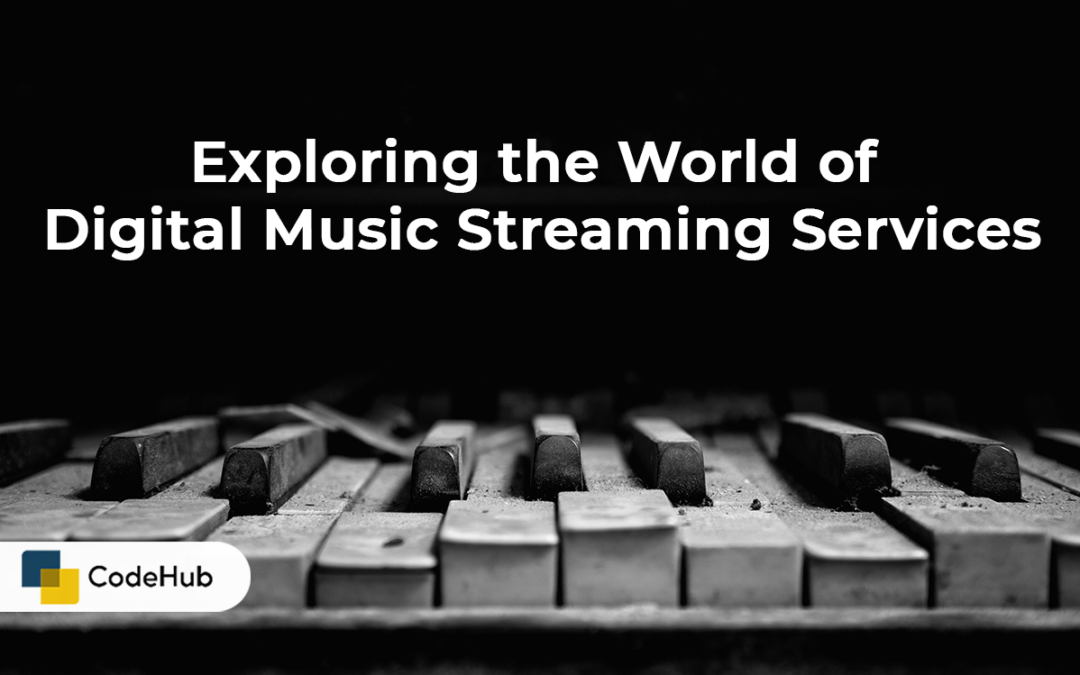Music is one of the most universal and powerful forms of art and expression. It can evoke emotions, memories, and moods, and connect us with others who share our tastes and preferences. Music can also enrich our lives by providing entertainment, education, and inspiration. However, the way we access and consume music has changed dramatically over the years, especially with the advent of digital music streaming services.
Digital music streaming services are platforms that allow users to listen to music online, without having to download or own the songs. Users can choose from a variety of genres, artists, albums, playlists, and podcasts, and enjoy them on demand, anytime and anywhere. Users can also discover new music, follow their favorite artists, and create their own playlists. Some of the most popular music streaming services in the market are Spotify, Apple Music, Amazon Music, YouTube Music, and Deezer.
But what are the benefits and drawbacks of using music streaming services? How do they compare to other forms of music consumption, such as CDs, vinyl, or downloads? And how do they affect the music industry and the artists? Let’s explore some of the pros and cons of music streaming services, and see how they have transformed the music landscape.
Pros of Music Streaming Services
- Accessibility and convenience: One of the main advantages of music streaming services is that they provide easy and instant access to a vast and diverse library of music and other audio content. Users can listen to music anytime, anywhere, without having to buy, store, or carry physical media. Users can also stream music on various devices, such as computers, smartphones, tablets, smart speakers, or TVs, and switch between them seamlessly. Moreover, music streaming services are often compatible with other apps and services, such as social media, gaming, fitness, or navigation, to enhance the user experience.
- Affordability and flexibility: Another benefit of music streaming services is that they are often cheaper and more flexible than other forms of music consumption. Users can choose from different subscription plans, ranging from free to premium, depending on their budget and needs. Users can also enjoy discounts, deals, and trials, and cancel or change their subscription anytime. Users can also save money by sharing their subscription with their family or friends, or by joining a student or a bundle plan. Furthermore, music streaming services can save users from spending money on buying or replacing physical media, or paying for data or storage space.
- Discovery and personalization: A further advantage of music streaming services is that they offer more discovery and personalization options than other forms of music consumption. Users can explore new music, genres, artists, and playlists, based on their preferences, moods, or activities. Users can also receive recommendations, suggestions, and curated content, based on their listening history, behavior, and feedback. Users can also create their own playlists, stations, and mixes, and customize them according to their liking. Users can also follow their favorite artists, podcasts, and influencers, and stay updated with their latest releases, news, and events.
Cons of Music Streaming Services
- Quality and compatibility: One of the main drawbacks of music streaming services is that they may have issues with quality and compatibility. Music streaming services may not offer the same sound quality as physical media, such as CDs or vinyl, or even downloads, depending on the bitrate, format, and compression of the audio files. Music streaming services may also require a stable and fast internet connection, which may not be available or affordable in some areas or situations. Music streaming services may also not work with some devices, systems, or platforms, which may limit the user’s choice and convenience.
- Ownership and availability: Another disadvantage of music streaming services is that they may limit the user’s ownership and availability of music. Users do not own the music they stream, but only have access to it as long as they have an active subscription and an internet connection. Users may lose access to their music if they cancel their subscription, or if the service shuts down, changes its terms, or removes some content. Users may also not be able to download or offline some music, or transfer it to other devices or media, which may affect their availability and portability of music.
- Experience and satisfaction: A further drawback of music streaming services is that they may not match the experience and satisfaction of other forms of music consumption. Music streaming services may lack the tactile and sensory qualities of physical media, such as the artwork, the liner notes, or the vinyl crackle. Music streaming services may also reduce the user’s engagement, immersion, and appreciation of music, due to the abundance, diversity, and convenience of music. Users may also feel overwhelmed, distracted, or bored by the endless options and recommendations, and may not develop a deep or lasting connection with the music or the artists.
Conclusion
Music streaming services are a modern and innovative way of accessing and consuming music that offer many benefits, such as accessibility, affordability, and discovery. However, they also have some drawbacks, such as quality, ownership, and experience. Ultimately, the choice between music streaming services and other forms of music consumption depends on the user’s personal preference, purpose, and situation. Users may prefer one over the other, or use both interchangeably, depending on what they want to listen to, how they want to listen to it, and where they want to listen to it. The most important thing is to enjoy music, and to appreciate the art and the artists behind it.

